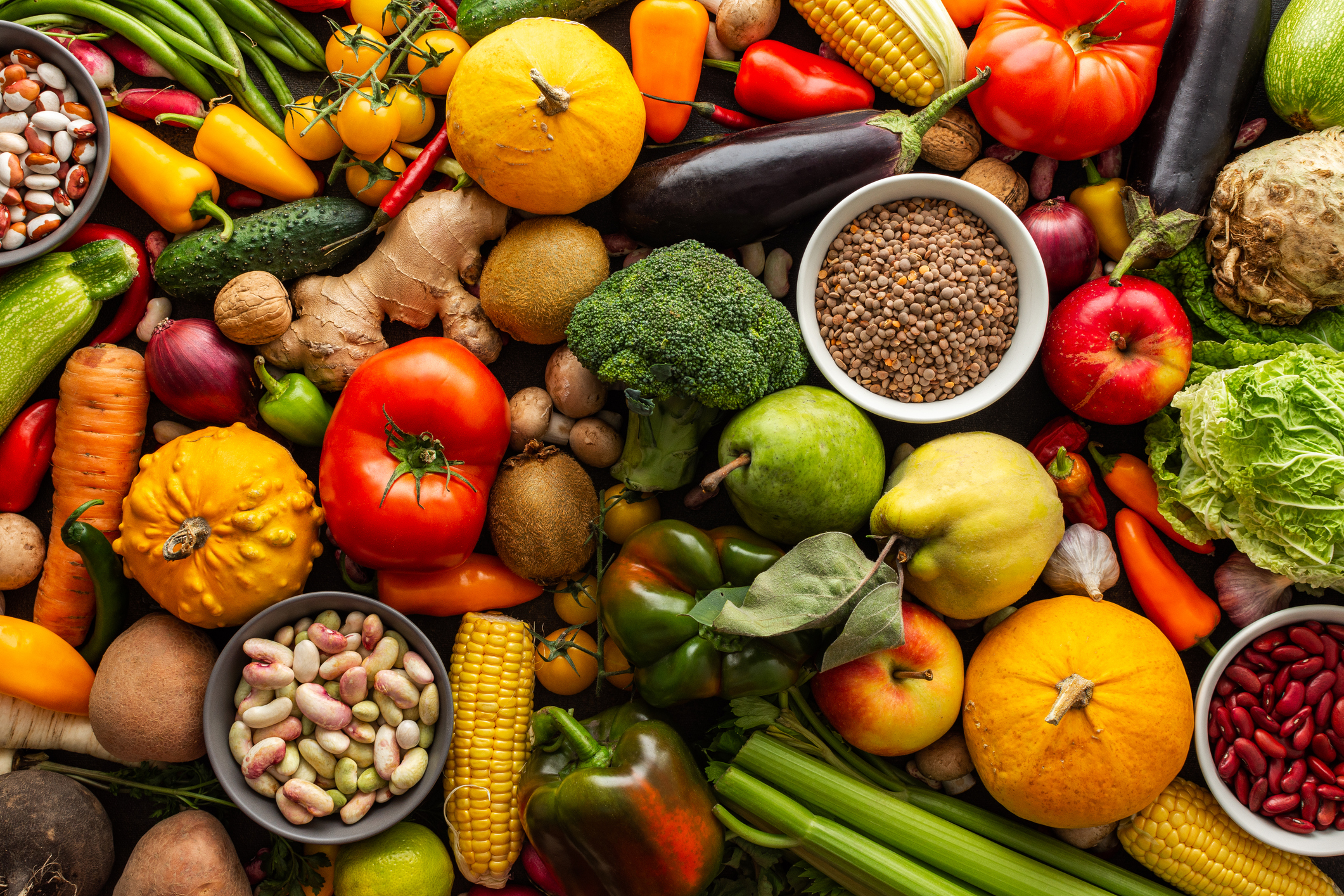Published May 17, 2024 • 7 Min Read
Even though there are a number of forces driving the current instability we’re seeing in the global food supply chain, there are things business leaders can be doing now to remain resilient in the face of unpredictable economic times.
What do businesses involved in the world of food need more of to navigate the current challenges facing food supply chains on a global level? A lot of support, say Terri Lang and Andrew McLauchlin – both senior commercial markets directors focused on the supply chain at RBC. They agree there are a number of forces driving the current instability we’re seeing in the global food supply chain and add there are a number of things business leaders can be doing now to remain resilient in the face of unpredictable economic times.
The biggest trends impacting the food supply chain right now
As a recent report from RBC Emerging Markets Equity Team highlighted, there are several forces driving food consumption and demand on a global level.
1) Climate change
The United Nations has warned of an impending food crisis where the challenges facing agriculture and food systems are so stark that to continue with ‘business as usual’ is not an option. Resources are over-stretched and arable land is becoming scarce. If, as estimated, food demand increases by over 50 per cent between 2020 and 2050, food systems will have to undergo significant changes because the current methods are not sustainable.
This is forcing organizations, which is good in the long-term but difficult in the short, to innovate and find new ways to produce and package goods.
“Food is the most complicated business to be in – everyone needs it, everyone wants it – but no one thinks about what it takes to grow it in a sustainable way. To innovate requires more than just implementing new technology – it requires investigating new ways of doing things that also align with national food and safety regulations,” says Lang. “And that can be a challenge, especially as we can’t predict when weather events will harm food supplies.”
2) Concerns about food safety and traceability
There is a growing need for companies to know where they’re getting their products from, how they’re being made, who’s making them, and who’s distributing them. This is part of the larger move to have leaders develop sustainable ESG strategies for their businesses.
In many cases, governments are even starting to enact laws that will force companies to show the items they’re importing meet national standards and regulations and aren’t tied to illegal practices.
“As ESG awareness and requirements become more commonplace, food and beverage companies are feeling the effects, if not directly then through their connection to some of the larger players and retailers,” says McLauchlin. “One notable example is food waste, which is a major issue within the industry and one that continues to get more and more attention.”
3) Shifts in preferences
This growing concern about food waste is tied to the larger issue of sustainability and the increasing demand by consumers to spend their money on items from companies that invest in sustainable food practices.
“Sustainability is a big issue for consumers right now, and it’s impacting the products they’ll buy and how much they’ll spend on something,” Lang says. “People don’t want things in plastic, for example, they want it packaged in a material that won’t contribute to the climate crisis. What that means is, suddenly, manufacturers need to find new packaging suppliers to ship their goods in.”
McLauchlin adds: “Shifting consumer preferences can have a large impact on a company’s performance as they look for ways to drive growth. The challenge is that there is often limited visibility into the level of demand or the sustainability of that demand and so it’s important that these types of investment decisions are well thought out.”
4) Challenging economic landscape
It will come as no surprise to anyone that the overall economy – and the cost-of-living crisis – is changing the way people are buying foods and food-based products, says Lang. A few years ago, she says a store like Whole Foods would have seen high volume of foot traffic, but now more and more folks are visiting outposts like No Frills or Food Basics.
“We’re starting to see the companies that own these ‘low-cost grocery stores’ working with suppliers to see if they can offer things at a lower cost. There’s a downward cost on everything,” she notes.
Organizations are also being forced to source cheaper ingredients to use in their products.
“Given the number of ingredients that are present in most food and beverage products it is only natural that these companies have to look outside their borders to source the raw materials that they need,” says McLauchlin. “The challenge with this is that it exposes them to foreign exchange volatility.”
How companies can respond
First: educate and assess
The first step to ensuring an organization can weather some of these global supply chain challenges, is to ensure leaders are educated on the issues mentioned above, so they can better understand the liabilities attached to not complying with evolving standards or consumer preferences.
“If you aren’t being impacted by all of these issues, you will be,” notes Lang. “That may not happen overnight, but it’s going to happen. Leaders need to determine where’s crawl, where’s walk, where’s run, so you can demonstrate you’re responding to market trends.”
She says working with someone with expertise in what’s happening within the global supply chain will help. Partnering with experts like Lang and McLauchlin can also help organizations assess the risks their businesses face and help them figure out where to focus their efforts and what to prioritize.
Second: investigate alternate suppliers
The Trade Club Alliance (TCA) is a great example of a resource that businesses in the food sector can use to investigate alternative suppliers should their relationship with one get upended.
The organization was born out of the need to equip businesses with information needed to overcome obstacles they may face. The Alliance offers an innovative digital platform that gives members the opportunity to connect with trusted partners in new markets while nurturing growth through human relationships.
Since its inception in 2015, the TCA has grown to cover over 65% of global trade corridors, accounting for 79% of the world’s GDP (and it’s still expanding!) and has created nearly 300,000 business opportunities for its 23,800-plus members in over 40 countries.
Third: manage liquidity and risk
“In times of uncertainty it becomes increasingly important to ensure you have a well-capitalized balance sheet with sufficient liquidity to manage [shifting costs],” notes McLauchlin. “As we’ve seen over the last few years, the economic landscape can change very quickly and directionally it can be hard to predict. This reality emphasizes the need for a company to ensure they’re properly positioned for change, be it positive or negative, so they’re not overburdened with debt and have access to sufficient liquidity to execute their strategy is paramount.”
He adds that where possible, companies should be encouraged to find natural hedges when it comes to foreign exchange exposure. “This isn’t always manageable, so it’s important for companies to understand their level of exposure and have a plan to mitigate volatility. A prudent foreign exchange strategy isn’t about always coming out ahead, but rather ensuring an organization is comfortable with the level of risk they’re exposed to.”
Moving forward
Both Lang and McLauchlin note the challenges and trends impacting the global food supply chain are ever evolving, so it’s on businesses to ensure they can respond with agility and resilience to any new pressures they may face. Getting ahead of things with the right partner is critical.
“Partners, like our team at RBC, can help you understand what’s happening in the context of the market, why things are happening now, and how to respond,” Lang says. “We don’t expect any of the pressures listed above to go anywhere anytime soon. Our ultimate goal is to continue to help business navigate the complex challenges facing them and to assist them in building a strong foundation today so they can remain successful tomorrow.”
This article is intended as general information only and is not to be relied upon as constituting legal, financial or other professional advice. A professional advisor should be consulted regarding your specific situation. Information presented is believed to be factual and up-to-date but we do not guarantee its accuracy and it should not be regarded as a complete analysis of the subjects discussed. All expressions of opinion reflect the judgment of the authors as of the date of publication and are subject to change. No endorsement of any third parties or their advice, opinions, information, products or services is expressly given or implied by Royal Bank of Canada or any of its affiliates.
Share This Article






